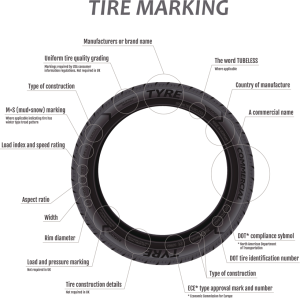Speed 
Speed and your tires: Most tires are manufactured to operate within a given range of speed, weight and tempeture. Your vehicle tires are the part of your car that contacts the road and need to be closly matched to your driving conditions, load and must also fit into your budget.
Equiping a vehicle with tires that have a lower load specification or simply overloading your car with too much weight can have adverse effects on wear and safety concerns.
Choosing a tire that does not carry a rating that rates below what your maximum driving speed could cause damage at the worst possible time…. When you are going at an accelerated speed, like passing another car or truck or avoiding an object in your path.
Some things that could occur when you exceed the rating of your tires are: Belt separation, Tread separation, Side wall damage, Excessive tire temperatures that could contribute to all of the above.
More information from the nhtsa.gov website [Read more]
| Tires are built to withstand more abuse than most of the other parts of your car, your tires are the only part of your car that actually comes into contact with the roads you drive on. It is important that you understand how your tires work as much as possible. Fitting a vehicle with tires that have a load rating lower than recommended or loading up your car with too much weight can strain your tires, causing them to wear out faster or even potentially fail. By the same token, driving your car too fast can also put more strain on your tires than they can withstand. | ||||||||||||||||||||||||||||||
| IF I NEED TO PASS THE VEHICLE IN FRONT OF ME, HOW FAST CAN I GO???...... | ||||||||||||||||||||||||||||||
| The letter that follows this number designates a tire’s maximum speed rating, providing the tire hasn't been damaged, overburdened, under-inflated, or altered in any way. While a given tire’s speed rating may be higher than the speed limit, tire manufacturers strongly advise that their products only be used within the legal speed limit. This table illustrates speed ratings for most tires intended for passenger use. | ||||||||||||||||||||||||||||||
| ||||||||||||||||||||||||||||||
| Speed ratings are first determined in kilometers per hour and then converted to mph, which is why the intervals are somewhat irregular. |

